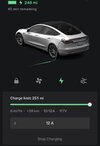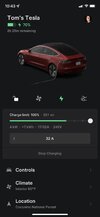Hi all - first post for me here and really want to thank those providing such helpful, insightful and educational information. I'm also a 2021 SR+ LFP owner who started at 253 at 100% and, after 3,000 miles driven am now consistently only at 248 at 100%. I drive about 60 miles/day and consistently charge to 100% every night (Level 1). I'm in Sacramento, CA and it's been much colder recently, so that could have something to do with it.
I'm going to start allowing the battery to drain a bit more between full charges and still charge to 100% at least once per week to see if anything changes. I'll report back! Even with the (very minor) % loss, absolutely love the M3 and am extremely happy I took Tesla up on the offer in August/Sept to take a LFP delivery (my reservation at the time was projecting December/January).




